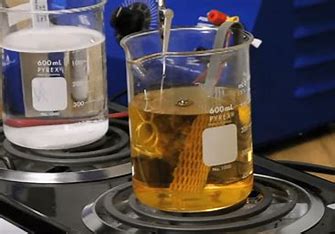
Learn more about rhodium plating and how it can enhance the luster and durability of your fine jewelry pieces.
Rhodium is a very rare metal that’s resistant to tarnish or corrosion, but it’s brittle and can easily become damaged. For this reason, it doesn’t work well on its own for making jewelry. However, rhodium plating is a routine practice jewelers use to coat gold and silver pieces. This involves placing a thin layer of rhodium over the base metal. Despite how common it is, many people still aren’t sure what the process entails or why it’s done. The following guide explains what you should know so you can consider all your options.
How Is Rhodium Plating Done?
Jewelry is rhodium plated using the electroplating technique. First, the piece must be given an ultrasonic cleaning to remove any debris that could potentially keep the rhodium from adhering properly. After this, it’s rinsed with distilled water and steamed. The next step is immersing the jewelry into a high-temperature rhodium plating solution, which is a mixture of sulfuric acid and rhodium sulfate. Usually, it’s dipped for about 30-60 seconds. During this time, an electrical current is activated to help bond the rhodium to the piece’s surface. Once the desired level of brightness is achieved, the jewelry is then rinsed again and dried off.
What Are the Benefits?
Since rhodium is a white, shiny metal, rhodium plating is primarily done to give fine jewelry a brighter appearance. This is especially true for white gold pieces, which are made with alloy metals and can sometimes look dull or have a yellow tint. Plating helps change the coloring to a crisper, more polished-looking silver. It can also be used on yellow gold jewelry to turn it white. This is a great way for someone who prefers the silver tone over gold to transform a piece they may have been inherited or gifted. Additionally, the extra layer strengthens pieces and protects the metal underneath from getting scratched. 
How Long Does It Last?
Rhodium plating isn’t a permanent solution and will eventually wear off. How quickly this happens will depend on the quality of the work, how often the piece is worn, and if it’s properly cared for. Continuous exposure to sweat, lotion, cosmetics, and other chemical substances will also make it wear down faster. Typically, plating can last anywhere from one to three years.
Taking jewelry off while participating in activities such as swimming, gardening, cleaning, and exercising will help preserve plating. It’s also best to avoid rubbing plated pieces against other metals. Pieces should only be cleaned with warm water, mild soap, and a soft polishing cloth.
If you’re interested in sprucing up your jewelry with rhodium plating, turn to Anderson’s Fine Jewelry in Redding, CA. Our jeweler offers more than 45 years of industry experience and can answer any questions you may have about adding a coating to your pieces. We also carry a beautiful and unique selection of inventory if you’re still looking for the perfect ring, necklace, earrings, or bracelet. Call (530) 223-3443 to speak with one of our friendly staff members about the services we provide, or visit us online to start shopping.



